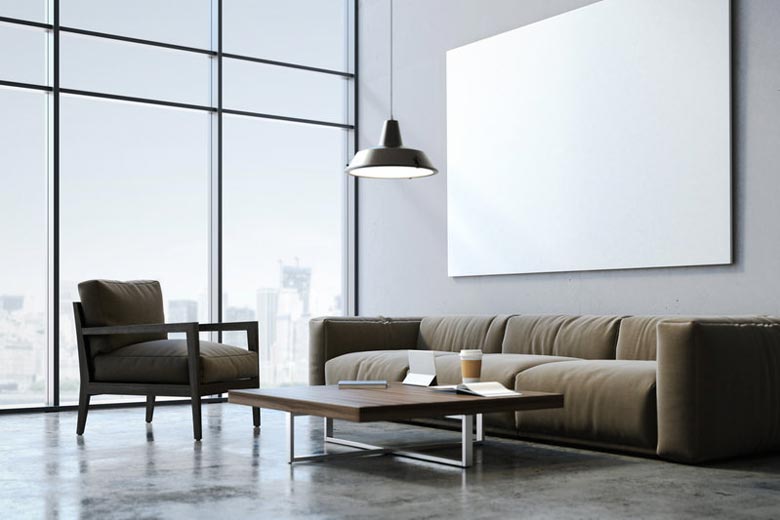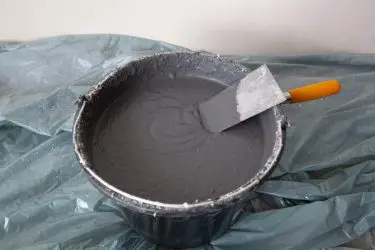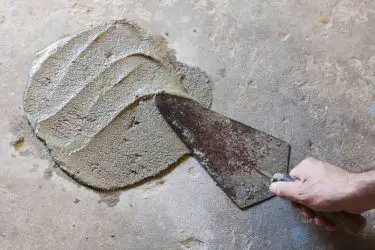Concrete is a durable, robust, and versatile building material. It is often found in walls and on floors due to its incredible durability and strength. However, concrete is very heavy, which leaves people wondering whether it is a suitable material to use on the second floor?
You can have concrete floors on the second floor. Concrete is typically poured into a thin layer over an existing surface on the second floor to reduce the weight exerted on supporting structures.
Keep reading to learn more about using concrete flooring on the second floor. I will explore the advantages and drawbacks of using concrete flooring upstairs, along with what is needed before installing concrete flooring.

Table of Contents
How Thick Should a Concrete Floor on the Second Story Be?
Concrete flooring has numerous benefits, including longevity and aesthetics, but it is a heavy material that requires a sturdy structure to support it. As a result, concrete floors are often thinner on higher stories. But how thin do they have to be when poured on the second floor?
A concrete floor on the second story should ideally be 4-6 in (10.16 – 15.24 cm) thick. Second-story concrete floors are often less than 4 in (10.16 cm) thick due to the weight of concrete as a building material. Still, the thicker the layer is, the stronger the concrete floor.
Concrete second floors can be installed as little as two inches (5.08 cm) thick. If the concrete is poured into a layer thinner than this, it will become more brittle, making it vulnerable to cracking or breaking.
As a result, in some homes, concrete flooring may not be possible upstairs if there is poor structural support in place.
The Advantages of Using Concrete Floors on the Second Floor
Concrete is often found throughout many houses, but concrete flooring is rarely found on the second floor. However, in recent years, it has grown in popularity. So why do some people opt for concrete floors on the second story of their homes?
Here are the advantages of using concrete floors on the second floor:
Sustainable
One of the advantages of choosing concrete for your upstairs flooring is the material’s sustainability. Concrete can be recycled and used again after some time.
On top of this, once a concrete floor has been installed, it will last for decades with very little maintenance or care. Therefore, you won’t need more materials for repairs or replacement.
The materials used in making concrete, like limestone, are readily available across the country. As a result, little transportation is required to deliver concrete from the source to your home. This reduces the carbon emissions released during transport.
Concrete production can be harmful to the environment. Fortunately, the ever-dynamic nature makes the material eco-friendly and safe for use at home.
Low-Maintenance
Concrete is a low-maintenance material. Once it has been poured and dried sufficiently, it will last for decades with little maintenance required. You only need to keep your concrete floor clean.
It is important to understand that thin layers of concrete are prone to cracking. The good thing is that cracks can be filled in with fresh concrete and it will be as good as new, making concrete flooring cheap and easy to maintain.
Cost-Effective
While concrete flooring may be more expensive than alternatives like laminate flooring, it is a highly cost-effective option. This is due to the material’s durability. Concrete lasts for a long time with little to no maintenance cost.
As a result, you can save a lot of money over time and cut back on the expenses that you would otherwise have to spend on repairs, replacements, and maintenance involved in other varieties of flooring.
Versatile
Another advantage of using concrete flooring on the second story of your home is the design and shape options available. Concrete can be poured into pretty much any shape. Also, it can be dyed by adding colored powder during the mixing process.
Patterns, designs, and textures can also be stamped into the concrete flooring when it’s wet. This is known as stamped concrete, and it offers homeowners nearly endless design options.
Related article: Are Concrete Floors Bad for Dogs?
The Disadvantages of Using Concrete Floors on the Second Floor
Now that you know the benefits of using concrete flooring upstairs, you may be eager to have it installed. However, before you rip up the flooring upstairs, it’s worth noting that there are also some drawbacks to using concrete flooring, especially on higher floors.
Here are the disadvantages of using concrete floors on the second floor of your home:
Heavy Weight
One drawback to using concrete flooring on the second floor of a property is the added weight. Concrete weighs a lot. If your home does not have a sturdy support in place, the weight of a concrete floor may be too much and pose some serious structural problems.
To overcome this issue, some people install thinner layers of concrete flooring. However, it would make the floor more vulnerable to wear. In some homes, it may not be possible to install concrete flooring on the second and third stories due to the lack of structural support.
Hard or Rough Surface
Perhaps concrete’s greatest asset is also its greatest downside. It is incredibly hard and tough. As a result, falling or slipping on a concrete floor can be extremely painful and carries a higher risk of injury when compared with alternative materials.
Rough concrete surfaces can also pose risks for scratches on the skin. Therefore, using concrete flooring upstairs may be a poor idea if there are babies, young children, or older adults living in your home.
Prone to Cracking and Aesthetic Wear
While concrete is a durable and long-lasting building material, it is prone to cracking or breaking. If your home shifts due to changes in soil or foundation issues or even earthquakers, your concrete flooring will likely crack.
Temperature changes can also cause the concrete to expand or contract, resulting in cracks forming. Although repairs are usually straightforward, they can still spoil the aesthetics of your home.
Can You Put Concrete Floors Over Wood?
Concrete flooring is sustainable, durable, aesthetically pleasing, versatile, and good value for money. However, concrete is also heavy and requires sufficient support to remain strong. So can you install concrete flooring over wooden floors?
You can put concrete floors over wood because it needs support to remain in place. However, wood has to be at least ¾ in (1.9 cm) thick to provide the concrete with enough support to remain strong and stable.
It is best to check the condition of the wood to ensure that it will not go through structural changes or deformities, such as when it gets exposed to moisture that may later affect the positioning or stability of the concrete floor.
In addition to wood, concrete flooring may also be installed over tiled floors and concrete slabs that fit together. It may also be poured into a space and let dry. Depending on which method is used during the installation, different support structures may be required.
Final Thoughts
Concrete floors can be installed on the second floor as long as your house has sufficient support structures to carry the added weight of the material. However, while concrete flooring is sustainable, durable, and stylish, producing concrete is not always environment-friendly.
In addition, it is a heavy material and some homes may not have enough foundation to support its weight. As a result, some people choose to install a thin layer of concrete flooring or forego the material altogether. Therefore, it is essential to weigh the pros and cons of using concrete before installing it on the second floor of your home.



